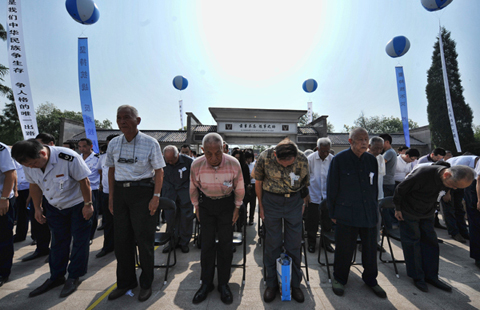China's manufacturing woes
Updated: 2014-09-03 15:26
By Xin Zhiming(chinadaily.com.cn)
|
|||||||||||
As China becomes the world's second-largest economy, the Chinese enterprises have also been put in the global spotlight as their scales ever expand.
Scale, however, does not mean strength.
In the latest China 500 list released by the China Enterprise Confederation, the registered revenues of those firms increased by 13.3 percent over the last year. Their net profits, however, rose by 10.6 percent.
In the global enterprise rankings, the Chinese enterprises have also registered lower profit levels.
China has become the country with the second-largest number of enterprises included in the Fortune Global 500 list released in July. The number of listed Chinese firms is larger than that of France, Germany and the UK combined.
However, the net profits of the listed Chinese enterprises increased by less than 8 percent compared with the last rankings in 2013, while the 500 biggest global enterprises achieved an average 27 percent net profit growth.
Both lists have revealed the relative weakness of the Chinese enterprises in profit generation. It could be the most serious challenge facing China as it tries to upgrade its economic structure and improve the prowess of its enterprises.
Its manufacturing enterprises, in particular, are in development doldrums. In the 2014 top 500 Chinese enterprises list, there are 260 manufacturers and 17 banks. The total revenues of those manufacturing firms reached 23 trillion yuan ($3.7 trillion), compared with 5.5 trillion yuan revenues of the 17 listed banks. However, the registered total net profits of those manufacturing firms were only 462.3 billion yuan, compared with 1.23 trillion yuan made by the banks.
The financials comparison between manufacturing and banking firms in the list shows China will have a long way to go as it upgrades the technological levels of its corporate sector.
Manufacturing is the backbone of a country's economy. China has been dubbed as the global factory churning out large numbers of various products every day. Technically, however, those manufacturers have largely remained weak since they produce mainly low-end products with small value added.
The manufacturing predicament can be attributed to at least two factors.
One is China's lending policies and high interest rates. The dominant Chinese banks are State-owned and they are still more willing to lend to State enterprises, not private ones. The manufacturing sector, however, is composed of mainly private companies, making them unable to have adequate access to bank loans.
Meanwhile, many companies have complained about the high interest rates of bank loans, claiming that given their low profit margins, the interest payments have become heavy financial burdens for them. Many economists and experts have supported them citing the colossal amounts of profits made by the banking sector.
Another factor leading to the manufacturing companies' difficulties is the macroeconomic environment, in which it is easier to profit from virtual investment, such as that in the real estate market, than making money from investing in the real economy, primarily the manufacturing sector.
In the past decade, China's home prices have risen fast and quite a lot of real estate business owners have made the China top billionaire lists compiled by various institutions. The so-called “wealth effect” has driven many investors to shift their focus from manufacturing to properties to make quick money.
The real estate boom, in a sense, is behind the woes of the manufacturing sector. The policymakers need to revise policies to discourage speculative investment in the property market and help channel social capital into the manufacturing and other real-economy sectors.
Only when that happens will the Chinese enterprises become real global powers that not only expand fast in scale but also improve in their profit-making abilities.
|
 |
 |
| China's final HSBC PMI falls to three-month low in August | Factory slowdown signals further weakness |
Related Stories
Manufacturing lags financial services in profits 2014-09-03 14:34
China's non-manufacturing PMI rebounds in August 2014-09-03 10:00
Factory slowdown signals further weakness 2014-09-02 07:20
Manufacturing activity moderates, prompting more support policies 2014-09-01 14:18
China August PMI eases to 51.1 2014-09-01 10:32
Today's Top News
China lays down plan for cross-border rail lines
China Mobile ringing up sales for iPhone 6
Hotline helps nationals overseas
New page turner
South Korea regrets over laser pen incident
Nude shots removed from websites
'Bad news' for pregnant giant panda
Vice-premier vows to advance modern Silk Road
Hot Topics
Lunar probe , China growth forecasts, Emission rules get tougher, China seen through 'colored lens', International board,
Editor's Picks

|

|

|

|

|

|





